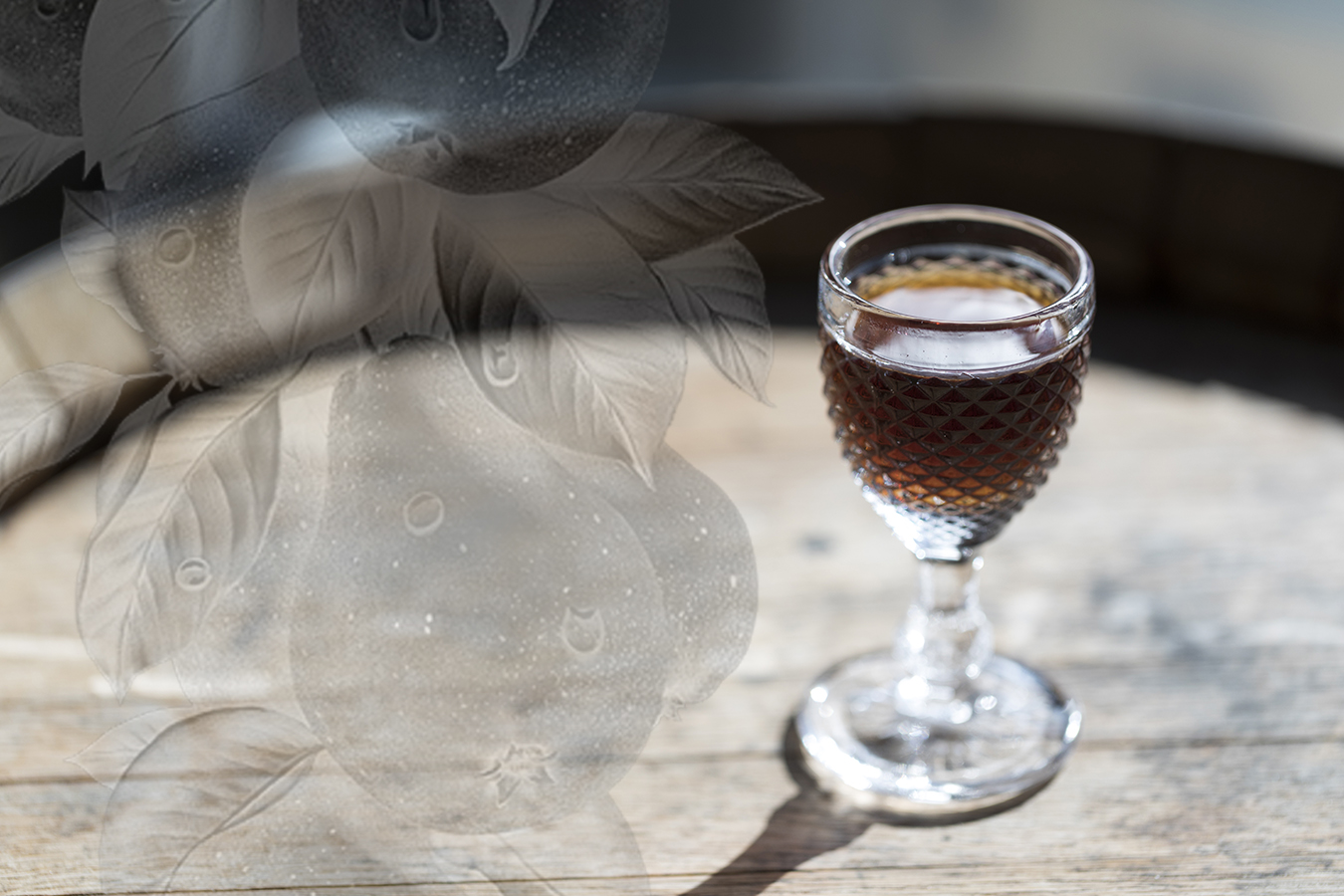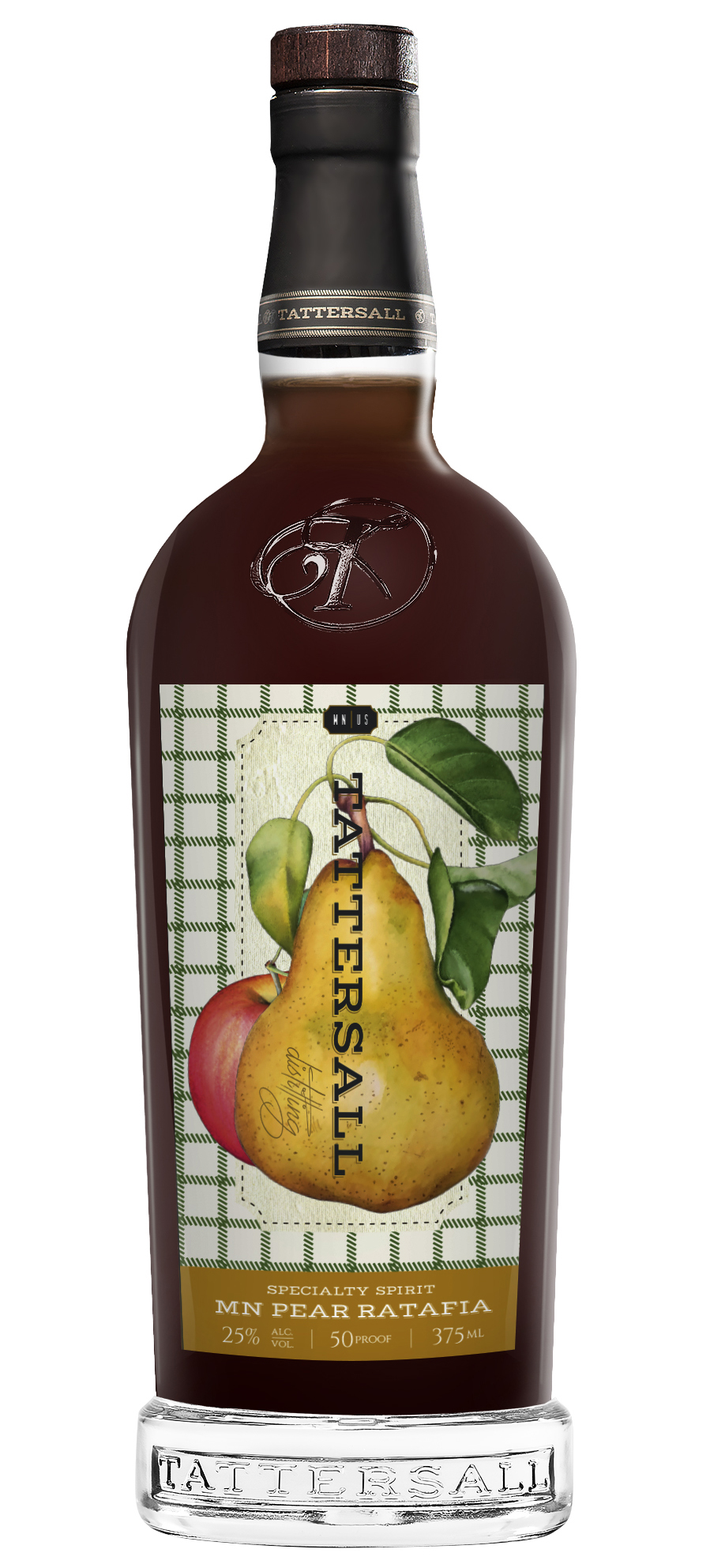
Ratafia
‘It’s a Deal’—but Hold the Arsenic
Ratafia—or ratifia, as it was also spelled—was a sweet cordial, made by steeping almonds or fruit stones in brandy. The name appears in English texts in the 1600s, but it may have originated in the French Caribbean, where a similar word for rum was common: tafia. Some speculate that tafia and ratafia were corruptions of the Latin “rata fiat” or “rata fiat conventio”—meaning “let the agreement be ratified.” Perhaps the custom of concluding business with a glass of rum or ratafia, leading to the toast “it’s a deal,” refers to those drinks.
The illustration below, dating from 1758 and held in the WHL collections, identifies various types of pear and their harvest seasons. 1 Use the tool to zoom.

By the 1820s, French brandy, which had long been prestigious, had dominated the global market in distilled alcohol for a couple of centuries. Around this time French brandy makers had also upped their game in long barrel-aging, making the “best French brandy” even better.
In our contemporary variation on an 1820s English recipe for ratifia, pear stands in for quince. Our mixologist has swapped bitter almonds—which contain traces of arsenic—with sour cherry stones. Ratafia can be served warm or cold.
QUINCE RATAFIA: Historic Recipe Transcription 2
• 3 quarts of Quince juice
• 3 drachms of Cinnamon
• 2 drachms of Corriander seed
• 24 grains of Cloves
• ½ ounce of bitter almonds
• ½ drachm of Annis seed
• 2 lb ½ of best loaf sugar
Infuse the whole a fort-night and then strain the Liquor & bottle it.
Half the quantity of brandy is sufficient to keep it.
Tattersall’s Contemporary Interpretation
• 3 quarts apple brandy
• 3 quarts pear juice
• 3-4 cinnamon sticks
• 7.4 grams coriander seed
• 1 gram whole cloves
• 2 grams aniseed
• .5 ounce Mahlab (an imported sour cherry stone from Iran/the Middle East; you can get equivalent sour cherry stones at Penzey’s Spices)
Combine all ingredients. Steep 2 weeks. Strain through a cheesecloth or a coffee filter to remove botanicals. Serve, or bottle and save.
Notes
- Johann Hermann Knoop, Pomologia; dat is, Beschryvingen en afbeeldingen van de beste soorten van appels en peeren, welke in Nederen Hoog-Duitsland, Frankryk, Engelland en elders geagt zyn, en tot dien einde gecultiveert worden, Leeuwarden: Ferwerda, 1758. WHL Folio 583.37 K756 ↩
- Cookery and Medical Receipts, 1820. Manuscript. Wangensteen Historical Library of Biology and Medicine, University of Minnesota. This early American manuscript is structured as a dos-a-dos book, meaning it reads from both the front and back! When read from one direction, the manuscript provides various cookery recipes; and when read from the other direction, the manuscript lists a number of medical receipts. ↩